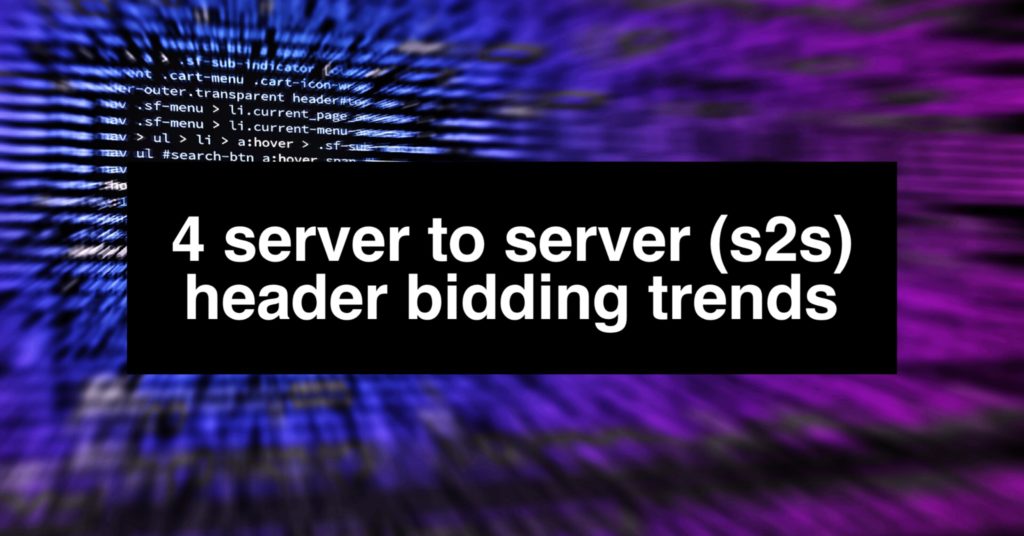4 Server to Server (S2S) Header Bidding Trends

Header bidding has indeed taken the digital advertising industry by storm in 2017 with more and more publishers switching their ad stacks from a traditional tag based waterfall, to a client or server side header bidding setup.
See Related:
Most publishers use a client side header bidding wrapper in which the head auction/bid aggregation from individual demand partners takes place in the browser on the actual web page of the publisher. This can cause a massive amount of latency, bid timeouts and lost revenue opportunities. In a client side auction, javascript code calls bidders sequentially to return bids where as in a server to server environment, all bids can be be called and collected at the same time. Publishers will be able to integrate more demand partners in a server to server environment compared to a client side header bidding integration.
In the article on AdExchanger called Header bidding goes server side: 6 things you should know, Chip Schenck, VP of programmatic sales and strategy at Meredith explained why client side header bidding is flawed:“It’s like LA traffic, All 10 partners may return in a lickety-split time frame, but the first five made it because they cut off another car and the other five are sitting behind [the browser ports], not getting back into the wall.”
Sovrn created a great example showing S2S vs. Client Side server bidding:

Now let’s talk about 6 trends of Server to Server (S2S) header bidding:
1 It’s the next popular thing in Adtech
In our beautifully chaotic industry we call adtech, professionals on the front like collaborate and bring global visibility to talk about and implement the latest strategies in programmatic monetization on a daily basis. I hear more publishers of all sizes speak fluently about server to server each passing day. Even if the technology is not fully baked out yet, publishers are eager to increase their programmatic revenue as client side header bidding has been successful for the majority of publishers industry wide.
2 New and old companies will invest in building or acquiring S2S technology
Companies providing header bidding services to publishers are popping up on a daily basis. Thanks to open source technology like prebid.js, professionals who have experiences building, implementing, maintaining and optimizing header bidding wrappers will be in a great position to help publishers out who are building out their S2S strategies. Companies that do not keep up with server to server in the competitive header bidding market may go out of business.
3 It will take time for results to be fully realized
Publishers often decide to test new ad tech based on a few factors:
- Are a majority of other similar sized publishers publishers seeing consistent and large increases in revenue
- Will it require a ton of time/money/resources?
- Are all my current demand partners and contracts compatible?
- How will it affect site performance/UX?
- What kind of visibility will I have?
There are not really any groundbreaking case studies that definitively prove S2S is vastly more profitable then client side. It does taking alot of resources, monitoring and overall effort to implement a custom strategy on each publisher. Do the benefits outweigh the costs of replacing your client side header bidding solution?
4 Loss of cookie matching concerns
Server side header bidding in theory offers unlimited scalibility by allowing publishers to plug in as many demand sources they want to into the server. The one major problem with this technique is that a demand partner is not directly on the page of the publisher. Cookies care not matched which could tank CPM and fill rates.